Tacoma Narrows Bridge history - Tale of three Bridge - 1940
A tale of three Bridge - 1940
"Galloping Gertie" - This First Narrows Bridge
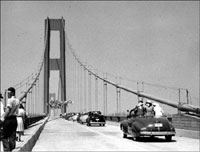
Opening day, July 1, 1940. The bridge cost $6.4 million; tolls started at 55 cents and were cut to 50 cents two months later when the bonds were refinanced.
It's been more than six decades since the first Narrows Bridge opened to traffic and then, four months later, collapsed violently into Puget Sound. Come summer 2005, the bridge that now lies as wreckage on the Narrows seabed, will commemorate its 65th anniversary.
When it opened July 1, 1940, elegant and graceful span stretched like a steel ribbon across Puget Sound. It boasted the distinction of being the world's third largest suspension bridge. It's completion marked a turning point in the history of Peninsula residents by ending decades of isolation and fueling economic growth.
Around the world people know the tale of Galloping Gertie. It stood for four short months, its deck flexing and rolling before tearing apart in a windstorm.
"Galloping Gertie" - This First Narrows Bridge
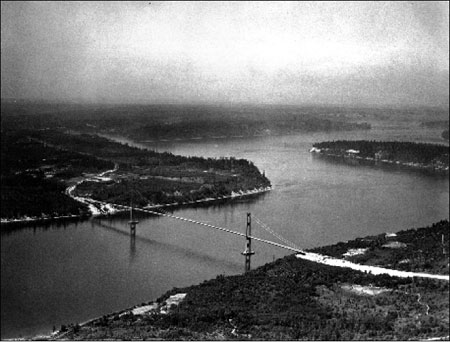
The Narrows and Lady Gertie. Construction of the first bridge began on November 23, 1938. Worders completed the bridge in only 19 months as compared to the 29 months it took to finish the 1950 (existing) bridge.
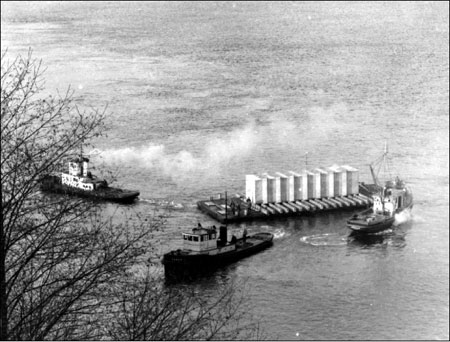
Caisson in tow. Before towing out the caissons, anchors (large Concrete blocks) were towed to the appropriate location and dumped - shoved off - barges. Here, the first section of the pier, the hollow caisson, was towed into place. To hold the caisson in position, divers secured it to the anchors on the seabed. Creating the pier was a gradual process, building up with steel and concrete onto the caisson. Slowly, the pier "grew" upward and sank downward.
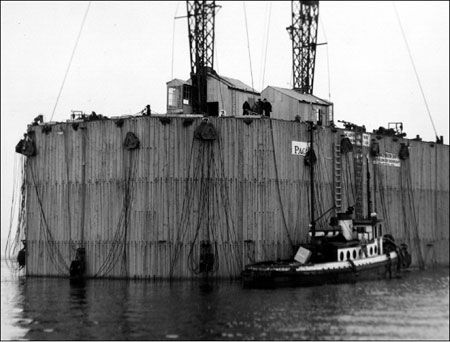
1940 caisson lags in place. The bridge foundations for the first bridge were used to support the towers of the present-day bridge built in 1950.
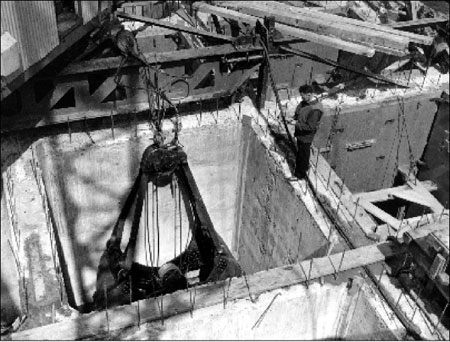
Dredging the Narrows. As a result of dredging the seabed, the caisson's steel cutting edge met and sunk into the earth. The pier was then excavated to the proper depth through its hollow core (dredge wells).
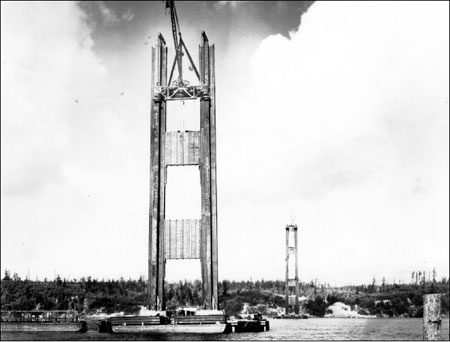
Standing like sentries in the Narrows. Towers were built on top each pier pedestal and finished with a steel saddle on its highest point. The saddle of each tower is where the main suspension cable is secured.
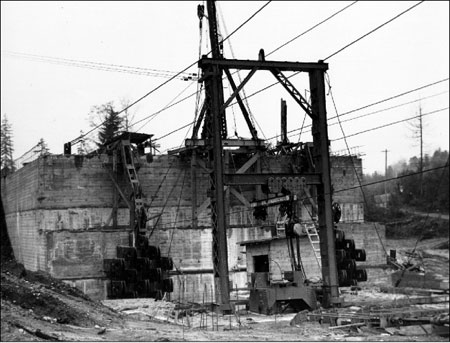
Anchorage Construction. This anchorage and its twin on the opposite shores of the Narrows supported the bridge and traffic using it. The same concept is being used today.
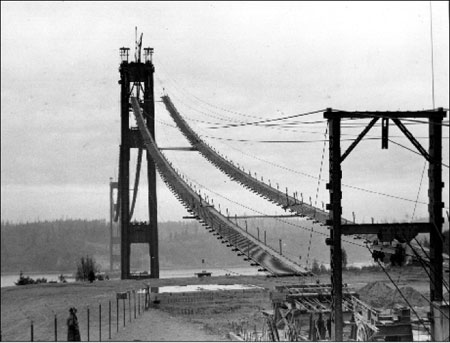
The making of suspension cables. Temporary catwalks were placed from tower to tower thereby allowing crews to work on the cables. The bridge's two suspension cables were spun from wire spools. The wire was unreeled onsite and affixed to an anchorage built on land at each end.
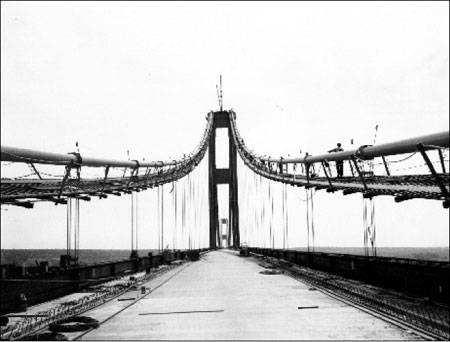
Building the Deck. For the first bridge, the deck was constructed with pre-formed steel sections. The sections were carried to the bridge on scows, lifted up and attached to the cables. When all the steel sections were riveted into place, the deck was ready to receive its concrete surface.
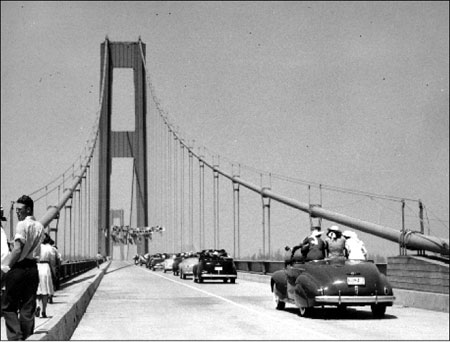
Opening day, July 1, 1940. At the opening ceremonies, several bands played a march composed by the Gig Harbor postmaster. The bridge cost $6.4 million; tolls started at 55 cents and were cut to 50 cents two months later when the bonds were refinanced.
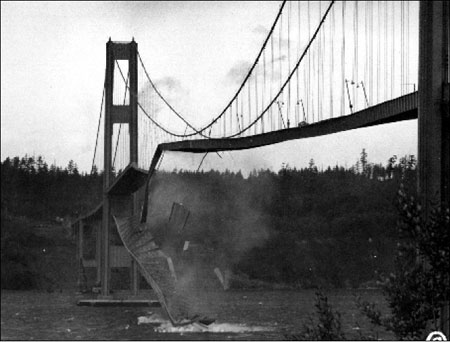
Thursday, November 7, 1940. For bridge engineers, it's a day that forever lives in infamy. Just four months after the span opened to traffic it tore apart in a 40-mile-per-hour windstorm. At about 10:30 a.m., a center span floor panel dropped into the water 195 feet below. The roadbed broke up and chunks of concrete and pelted the Narrows. The first Narrows Bridge is by no means the only bridge to ever collapse; Galloping Gertie's demise may represent the most dramatic failure in the history of bridge engineering. But it's a failure that contributed significantly to the sturdier and safer suspension bridges of today.
About the images:
Photos on this panel are courtesy of the Gig Harbor Peninsula Historical Society.
About the content:
Some content in this exhibit has been excerpted and/or paraphrased from the Gig Harbor Museum's exhibit titled A Tale of Two Bridge.